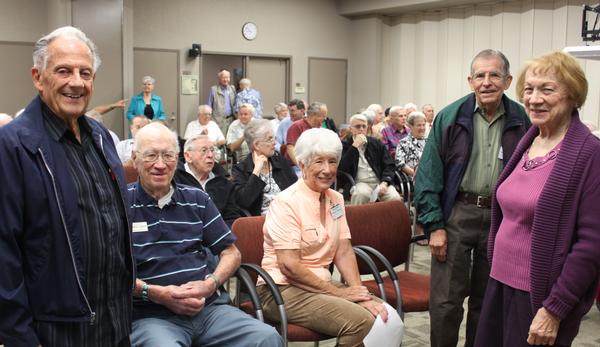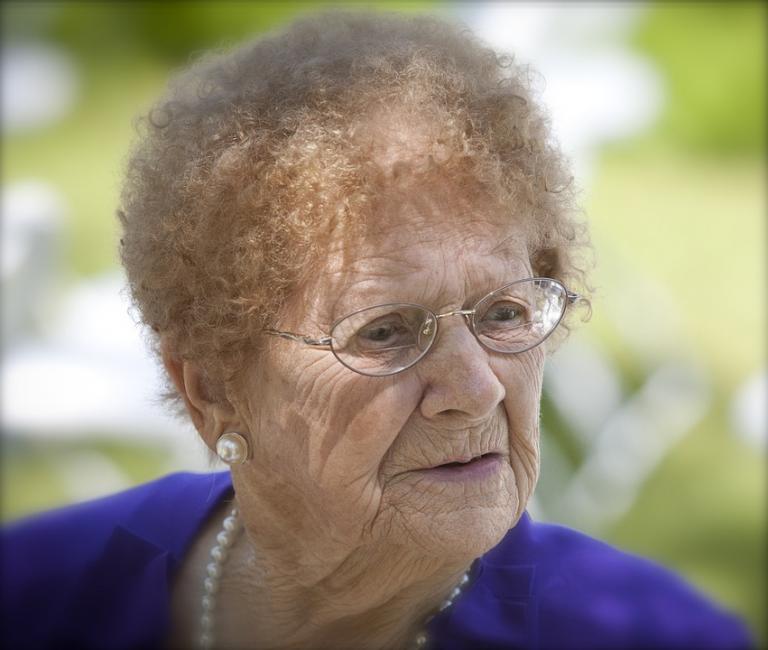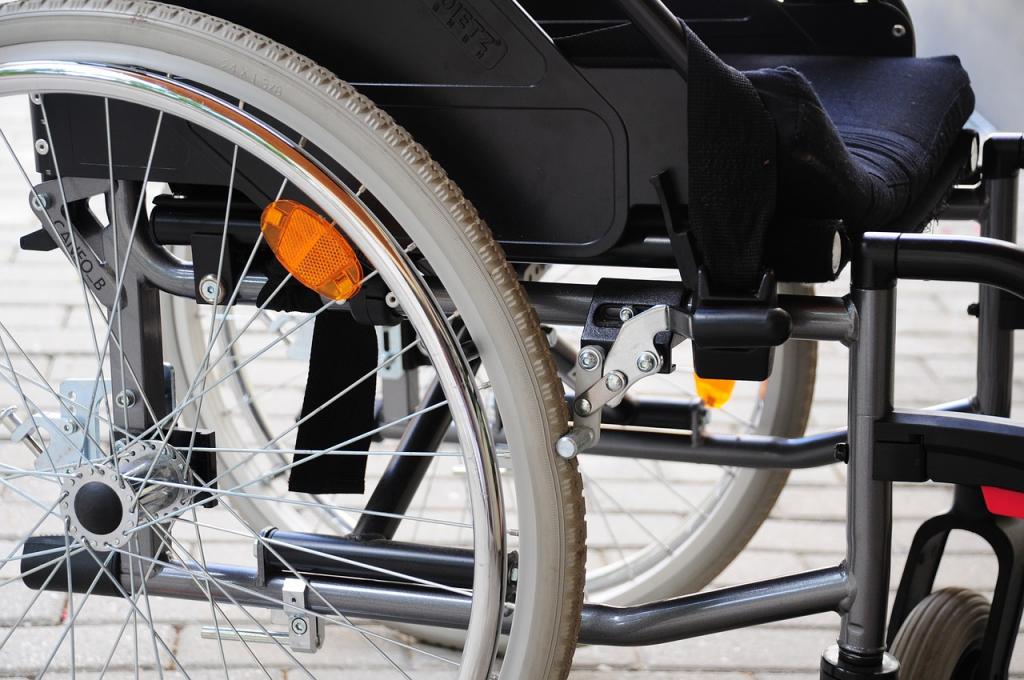
Or, when public policy and family issues intersect.
A recent article in the Tribune, “‘You can’t be lonely and be a healthy person.’ How seniors can combat isolation,” reported on the health issues related to social isolation of retirees, and some efforts being made to combat isolation.
And, well, as I’ve mentioned periodically, my parents are the poster children for the issue of social isolation of retirees; they are financially well-equipped to move anywhere they choose but instead live in the home they’ve owned since 1978, a two-story home with steps to get in, and even to get to the first floor bathroom, much less upstairs, a home in a suburb where nothing is accessible without driving. We’ve had The Talk, in which we encouraged them to look at senior communities, or even activities at the Senior Center, and have gotten nowhere.
In fact, it was a nearly 4 years ago that I first griped about this issue: the fact that we put such tremendous efforts into helping the elderly stay in their homes — everything from property tax freezes (which help longtime homeowners but the benefits of which are lost if you move to a home of equivalent cost but more senior-friendly) to volunteer yard work to transportation assistance — when those seniors would be better off in communities that provided more services and, more importantly, more social interaction, than the isolating Family Home in the suburbs. And those seniors indeed say that it is very important to stay in that home, but I am convinced that this isn’t something that’s somehow innate in us, but is the result of a culture that communicates that this is important, and, what’s more, signals that to move away means failure, incompetence, dependence.
I have no statistics to support this hunch, just the barest of anecdotal evidence, but I don’t think this is as much of an issue in Germany. Or, at least, my in-laws didn’t hesitate to move from the home they’d raised their kids in, into a condo with an elevator and a parking garage. And it seems to me that, given that the single-family home that we practically place as an idol here, is not the norm, even for families, in Germany, there’s much less of a barrier to cross, to leave that type of home for an apartment, there.
All of which I’ve griped about before, so it’s time to put on my big girl panties (or is it pants? the internet isn’t sure about that) and see what the literature says.
Wikipedia cites the CDC as defining “aging in place” as “the ability to live in one’s own home and community safely, independently, and comfortably, regardless of age, income, or ability level.” Later in the Wikipedia article, the author uses the expression “home of choice” which suggests that “aging in place” could encompass other living situations than simply living in the longtime “family home” and is simply meant to be a distinction vs. living in a care facility of some kind. But if that’s the case, it’s not helpful.
Wikipedia also cites a statistic that 90% of surveyed adults prefer to “age in place.” This is based on an AARP study, “Beyond 50.05, A Report to the Nation on Livable Communities: Creating Environments for Successful Aging,” a report that’s undated but seems to have been published in 2005 based on 2004 survey data, as part of a larger series of reports, and which focuses on “livable communities.” The report promotes “community engagement” as something that produces successful aging, and measures this with a Community Engagement Index. Membership in community and religious organizations and volunteering are important ways of promoting engagement — but does this community need to be the one in which one spent one’s family-raising and early empty-nester years, and, even if so, does this necessarily mean living in the Sacred Family Home?
The report, well, reports, that
Older adults are likely to have rather strong attachments to place, in part because their investments have built up the longer they have lived in their community. Gerontological research has demonstrated the stresses that arise when older persons make the transition from living independently (in a home and community to which they may be attached) to a retirement community.
And, again, while understanding that a move is stressful, this doesn’t answer the question of how such a move affects their long-term well-being.
The report continues by reporting that seniors who score high on the “Index of Community Attachment,” a measure based on their replies to a questionnaire which asks them items like, how many neighbors they know on a first-name basis, or whether they’ve conversed with a neighbor in the past three months, or whether they feel like they have something in common with “the people in my local community.” Not surprisingly, those who score high on this index also score high on measures of successful aging, based on responses to questions like “I am satisfied with my life the majority of the time,” or “I am able to take care of myself” or “I have a high quality of life.”
But I’m still not seeing any proof that long-time residence in a particular community or neighborhood is what matters. Again, as a personal example, my grandparents moved from their own Sacred Family Home to a ranch house in the neighboring suburb, and spent the last 10-ish years of their lives there. They stayed at the same church, and, in terms of neighborhood, developed a high degree of “Community Attachment” in their new neighborhood. In fact, to make this more concrete, they lived in Bellefontaine Neighbors, a St. Louis suburb not far from Ferguson, where they originally moved when my mom was in high school, because the “Coloreds were coming in” to their old neighborhood in the city. By the time my grandmother was aging in her Spanish Lake ranch house, the “Coloreds” had caught up with her, and lived next-door, and she let go of old prejudices and instead formed relationships with them. On the other hand, for many years, we had a neighbor who was “aging in place” in the home she’d lived in since her young adult years, but as the neighborhood changed and new families moved in, she knew fewer and fewer of them, and spoke to them rarely, except to the extent that we felt the obligation to stop by and visit.
What does matter is that older people know and have relationships with their neighbors, because this social network provides them informal support and emotional support. Belonging to organizations also increases successful aging, based on the same metric as community attachment, the likelihood of responding affirmatively to life satisfaction-type questions, and the same is true for those who volunteer (though there’s certainly a cause-and-effect issue here; people in poor physical or mental condition are unlikely to be able to volunteer or belong to groups — and it’s not clear if the data has something to say about this in a longitudinal way, that is, whether people who were organization members or volunteers over time continued to be better age-ers).
Anyway, by page 48, we finally get to the preferences question: 84% of all people ages 50 or older, say that they somewhat or strongly agree with the statement, “what I’d really like to do is stay in my current residence for as long as possible.” This figure is lower for 50 – 64 year olds, at 78%, and then climbs to 95% for the 75+ group. However, the study doesn’t ask how many of those respondents are answering that they want to stay, only after already having moved in the recent past, vs. still being in the Sacred Family Home. (The report does state that 5% of age 55+’ers move in a given year, but that doesn’t indicate what the cumulative impact is; how many 75+’ers, for example, have moved in the recent past. And it’s not just a matter of working out the probabilities because some people will have moved multiple times.)
What’s more, at least as of 2003, 71% of those age 50+’ers lived in single-family detached homes, but 85% report having a full bath, and 81% a bedroom on the main level. This is a significantly greater percentage than the 48% and 35% reported nationally by the census (presuming I’ve interpreted the data correctly.) Perhaps the surveys aren’t apples-to-apples, but that does suggest that some older adults are adapting, regardless of what they say.
And the report continues by discussing how policymakers can best meet this expressed desire, both in terms of characteristics of homes and communities, and with respect to transportation, means of enabling older adults to drive for as long as possible, and transportation options when they no longer drive.
But I’m not seeing anything in this report that assesses the question of what living circumstances, as adults age, actually produce the best quality of life. Yes, they say they want to life in their current residence “for as long as possible.” Maybe the value of watching TV in the same room one’s done so in, for the past 40 years, is worth so much for one’s quality of life, as to outweigh all the negatives of such a situation, but I’m skeptical.
And, fine, yes, maybe I’ll find that answer if I continue to dig. Maybe it’s waiting for me with the right google search term, or enough patience to page through pages of search results. But here’s my conclusion for the time being:
In The Avengers, which my kids have now watched multiple times, there’s a scene in which — well, I could set it up for you, but I don’t think it matters. Here’s the dialog:
World Security Council: Director Fury, the council has made a decision.
Nick Fury: I recognize the council has made a decision, but given that it’s a stupid-ass decision, I’ve elected to ignore it.
Can we just tell the nation’s seniors, when they announce they’ll leave the Sacred Family Home feet first and in no other way, that’s it’s a similarly stupid-*** decision, and, even if we don’t “elect to ignore it,” then at least set up our various public policy nudges to encourage them to do otherwise? We could, at a minimum, provide whatever housing assistance we deem appropriate on an equal basis regardless of whether they live in the SFH or elsewhere, and, given that the task of moving is so daunting, provide some of our volunteer and governmental resources towards helping seniors move rather than affirming them in the correctness of their decision to stay put.
Because my mom and dad really should have been nudged into a senior residence, or at least a condo, long ago.
Some added thoughts:
One thing that’s been raised in comments here and on Facebook, and seems absolutely correct, is that the earlier one makes a transition to a retiree-friendly home, the easier it is to adapt and build a retirement with a lot of satisfaction from relationships and activities. Waiting until dementia or frailty has already set in, makes the whole thing much more unpleasant. Which means that you really need to have a lot of foresightedness to make the change — and I wonder if that means that those who are most confident in their ability to “retire well” in their own homes are disadvantaged in that regard.
And which makes it all the more important for retirees who could benefit from moving to a more retiree-friendly home/community and out of a two-story, suburban/no mass transit home, to hear the message (and receive nudges) that it’s beneficial rather than being affirmed in their decision to stay put and just get home health care if needed. Oh, and I suspect that people have an overly-rosy understanding of home health care, and think it’s free of charge for everyone.
Image: http://www.navair.navy.mil/index.cfm?fuseaction=home.NAVAIRNewsStory&id=4801











